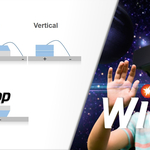
CES 2022: Seoul Viosys’ WICOP mc, a Metaverse VR Display Technology, to Make Its Debut
ANSAN, South Korea–(BUSINESS WIRE)–#CES2022—Seoul Viosys Co., Ltd. (KOSDAQ: 092190), a company specializing in optical semiconductors, will debut its WICOP mc (WICOP + Micro Pixel) products at CES 2022 in Las Vegas on January 5th, which adopt the world’s first No-Wire & No-Package WICOP technology. Seoul Viosys announced on the 16th that the WICOP mc, made in the form of a micro-display for metaverse (three-dimensional virtual world) VR, will be specially unveiled at the exhibition hall.
WICOP technology is a revolutionary technology in semiconductors that makes it possible to populate brand-new semiconductor chips into a general manufacturing process directly without modification. In fact, in order to manufacture mini or micro LEDs of less than 100 μm (micrometer), accessories such as wires should not be accompanied, and it is the WICOP technology that solved this problem. Surprisingly, some large companies sold products that copied the WICOP technology only by changing their names to CSP (Chip Size Package) or COB (Chip On Board), and even some global companies purchased the infringements. Seoul Viosys filed a patent lawsuit against Philips and 13 automobile parts brand companies that infringed on the technology, and won the case by obtaining a ban on sales, proving the technological prowess of WICOP.
AR, VR (Augmented, Virtual Reality) has received a lot of attention, but has not yet been used in everyday life, because the high-performance displays that meet the characteristics of VR/AR requirements have not yet been fully developed. While LCD and OLED, which have been already mass-produced, do not satisfy the characteristics required by VR/AR such as high brightness, high resolution, power efficiency, and design flexibility, micro LED is attracting attention as an alternative. However, it is not easy as it sounds to adopt micro LEDs for AR/VR because the efficiency of LEDs deteriorates when micro LEDs become smaller than 50 μm (micrometer).
By the way, Seoul Viosys’ WICOP mc not only solves the problem of efficiency degradation, but can also realize the high-resolution virtual reality of 2,000 PPI (Pixel Per Inch), meeting all the requirements of micro display technology.
“Currently, we have succeeded in developing LED technology for VR, and this technology will be displayed separately for pre-booked VIP customers,” said a development manager of Seoul Viosys.
At CES 2022, an FHD 82-inch display with 6.2 million WICOP mc chips and a 40-inch display with 2.8 million chips will make an appearance.
About Seoul Viosys
Seoul Viosys is a full-line solution provider for UV LED, VCSEL (Vertical Cavity Surface Emitting Laser), the next-generation light source for 3D sensor and laser, and a single-pixel RGB “Micro Clean Pixel” for displays. Established in 2002 as a subsidiary of Seoul Semiconductor, it captured the No. 1 market share in the UV LED industry (LEDinside, 2020). Seoul Viosys has an extensive UV LED portfolio with all wavelengths range (200nm to 1600nm) including ultraviolet rays (UV), visible rays and infrared rays. It holds more than 4,000 patents related to UV LED technology. Violeds, its flagship UV LED technology, provides a wide range of industries with optimal solutions for strong sterilization and disinfection (UVC), skin regeneration (UVB), water/air purification and effective cultivation for horticulture. In 2018, Seoul Viosys acquired RayCan, a leading optoelectronic specialist, to add the advanced VCSEL technology which supports smartphone facial recognition and autonomous driving, and has started its mass production. In January 2020, it introduced a disruptive “Micro Clean Pixel” that has the potential to be a game-changer in the display market. To learn more, visit http://www.seoulviosys.com/en/.
Contacts
Seoul Semiconductor Co., Ltd.
Jinseop Jeong
+82-70-4391-8555
jjs8732@seoulsemicon.com
_WICOP_Technology(1).jpg)
